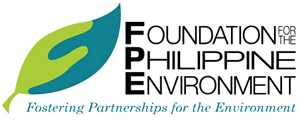News
Biodiversity Conservation and Sustainable Development in the Philippines and the SDGs
Posted on June 21, 2016While heralded by biologists as the epicenter of marine biodiversity on earth, and one of the world’s 17 megadiverse countries, hosting 70-80% of its biodiversity, the Philippines “also ranks among the most threatened ecological regions today.”1 The Sustainable Development Goals (SDGs) or Global Goals, which took effect last January 1, 2016, are directed towards “people, prosperity, planet, partnership, and peace.” Its focus on the environment—responsible consumption and production, climate action, life below water, and life on land—is echoed by what the Foundation for the Philippine Environment (FPE) advocates for on a national scale, through biodiversity conservation and sustainable development (BCSD) in its key biodiversity areas nationwide.
The 17 SDGs differ from the Millennium Development Goals (MDGs), which expired in 2015, in terms of scope, target, and design. The SDGs now cover economic growth, social inclusion, and environmental protection, and targets both developed and developing countries. Unlike the MDGs, they are a product of a consultative process among 193 United Nations (UN) Member states, civil society, and other stakeholders.2
The 2030 sustainable development goals and targets.
The 2030 sustainable development agenda builds on the learnings of the past fifteen years, and specifically, on critical environmental issues, aim to:
· Goal 12—Ensure sustainable consumption and production patterns;
· Goal 13—Take urgent action to combat climate change and its impacts;
· Goal 14—Conserve and sustainably use the oceans, seas and marine resources for sustainable development;
· Goal 15—Protect, restore and promote sustainable use of terrestrial ecosystems, sustainably manage forests, combat desertification, and halt and reverse land degradation and halt biodiversity loss.
But what concrete steps need to be taken to achieve the SDGs in the Philippines? What interventions need to be undertaken to aid the most vulnerable—the indigenous peoples, communities battered by typhoons? The UN recommends addressing these grave climate issues through integrated management of activities related to natural resources, adequate financial resources, education and awareness raising, and promoting partnerships with all stakeholders at all levels3.
FPE, aided by the SDG framework, aims to do exactly this—sustain its BCSD efforts in the Philippines by providing technical and financial assistance to empower local NGOs and POs, and building multi-stakeholder partnerships to ensure conservation initiatives in its key biodiversity areas.
In light of the growing challenges of BCSD, and valuable insights from FPE’s regional consultations in Luzon, Visayas, and Mindanao, and priority issues—mining and logging—were identified. With these in mind, FPE aims to intensify its site-specific BCSD efforts and empower organized local communities themselves, in cooperation with government and non-government groups, to mitigate the grave impacts of climate change and human activity to biodiversity loss in ecosystems, seas and forests in the Philippines, towards sustainable development.
1 Hub of Life: Species Diversity in the Philippines. 2014. Accessed 6 June 2016. http://www.fpe.ph/biodiversity.html/view/hub-of-life-species-diversity-in-the-philippines/all/0
2 Sustainable Development Goals. http://www.un.org/sustainabledevelopment/summit/
3 Protecting our Planet and Combatting Climate Change. 2015. https://sustainabledevelopment.un.org/content/documents/8156Interactive%20Dialogue%20%204%20-Climate%20Change%20Environment.pdf

 DISPLAY CALENDAR
DISPLAY CALENDAR

 Read Policy Briefs
Read Policy Briefs
 View Our Partners
View Our Partners
 Access Grants MIS
Access Grants MIS
 Login to Webmail
Login to Webmail